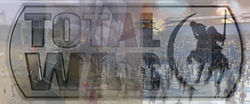Rush
A Rush is an all-in fast attack or preemptive strike, often using all available military assets, intended to overwhelm an unprepared opponent. The tactic is analogous with the real-world tactic known as blitzkrieg, or lightning-war.
Contents
Details
History in Total War
Rushing emerged early on in the days of multiplayer real-time strategy, as a tactic used by experienced players to catch turtling newbie players off-guard. It is especially used in the melee-based total war games as a counter to inexperienced skirmish players.
In Total War, highly mobile contingents of shock-cavalry are often used to bring about a crippling rush strike; a skirmish army or any army light on defense units will usually be routed - the shock of dozens of heavy units bearing down on a player is usually enough to cripple an inexperienced player's judgement and bring about a mass chain-rout.
Fundamentals
- Information is key. Early scouting determines a rusher's ability to gauge the appropriateness of a rush. Conversely, a defender who recognizes a rush in its early stages has the best chance of stopping the rush.
- Flat maps maximize the effectiveness of rush tactics. Forests, hills, and cliffs hinder the speed of a rush and provide choke points for a turtling player. Any time the rusher spends in transit is time a defender can use to prepare countermeasures.
- A player must recognize the failure of a rush quickly and have a fallback plan for it. Counterattacks on the retreating player can have the effect of a chain rout. Rushers should have sufficient troops to beat back a counterattack and a plan to defeat the (usually) heavier troops of their opponents.
- Micro-management skills are essential. The rusher must be proficient in the use of hotkeys, which allow for rapid selection of pre-grouped units. A more significant challenge to the micro-manager is the effective control of large armies. Massed units often experience odd pathing movement around obstacles and through chokepoints, so a player must compensate for this phenomenon if the rush is to succeed. Furthermore, the rush must arrive as a mass army and never as a trickle of units.
Advantages
Like most components of maneuver warfare, the primary advantages of rush tactics lie in the simplicity for the attacking player in relation to the strain it places on the defender. The defender must counter a large number of units attacking en masse. Players who opt for balanced build orders can be overwhelmed by players who rush; ranged troops weak in melee can easily be overwhelmed by attack-oriented troops. Due to the efficiency of multiple coordinated rushes in team battles, players can replaces losses faster than opponents and send a second wave against a reeling defender. For this reason, even a failed rush can be considered a success if the initial attack softens the target for a quick second wave.
Disadvantages
The main weakness of a rush is the tendency of the rush to limit a player's tactical options; rushes require specialized armies (in the melee-based Total War games) lacking ranged units has little means of defense against a well-prepared army controlled by an experienced defender. In the event that an opponent of the rusher recognizes the rush tactic early, he can take advantage of the rusher's limited options. For example, a player who recognizes an imminent rush can exploit the vulnerability of cavalry with chariots, or in the case of the gunpowder Total War games, quickly assume square formation and counterattack with his/her own cavalry.
In campaign, the rushing player may be vulnerable to attack early on, as the person intent on rushing is forced to save resources in order to build their rushing units, leaving little if not any means of suitable defense.
Rush Armies
Specialized rush armies are common in the multiplayer world of the melee-based Total War games, due to the possibilities of mobile shock armies through the variety of heavy shock unit choices in these games. These normally consist of little ranged units but a mass of fast-moving, melee-proficient shock units such as Cataphracts or Briton Chariot Warlords. In the gunpowder-based games, a player may forgo light infantry, relying on militia to take the brunt of musket fire and cavalry to overwhelm as their opponents reload.
Synonyms and MP Slang
A Rush is sometimes known by these names in multiplayer:
- Zerg rush
- Zerging
- Swarming
- Goblin Tactics
- Cheesing
